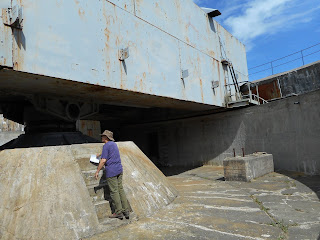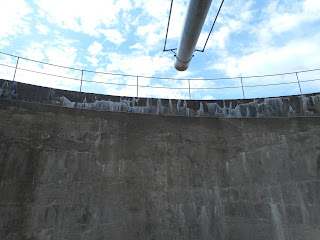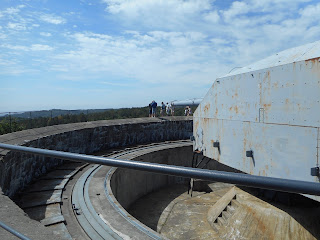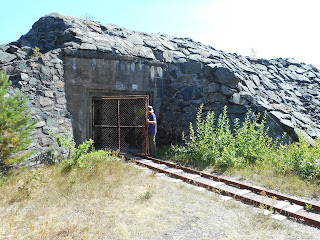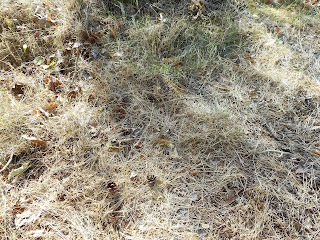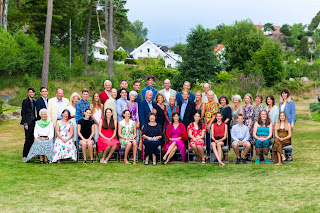High tea and birthday pizza
My cousin An,
my aunt’s daughter, had invited us to tea, so after a brief wash-and-brush-up back
at my aunt’s, we loaded the sat-nav with An’s address and set off across
Kristiansand again. An had taken the trouble to visit us several times in the
UK, so I was more than pleased to return the favour.
‘She lives in a much better area than me,’
said my aunt, ‘except for her road.’
The road looked fine to us –wide and
peaceful, big houses with gardens. An lived in the top flat of one of the
houses with her young son HJ. She showed us around and on to her spacious verandah
with its green views where she was drying her washing.
 |
| My cousin's spacious verandah |
HJ wasn’t
well. What with the heat and the party he’d been overdoing things.
‘And then today he went swimming with friends,’
said An.
‘Where did they go?’ I asked, ever curious.
‘There’s a lake nearby,’ she said.
‘Did they go on their own?’ I asked.
‘Oh yes,’ said An.
Wow, I thought. Even though Frog and I had
been able to wander where we liked as children, free from adult supervision, we’d
been brought up never to swim in
fresh water (polio, pollution, steep-sided quarries). English children today
might have been able to swim in fresh water but they wouldn’t do it alone. (I
don’t know about the rest of Britain.) It reminded me of the Australian bush,
where I’d worked in the 1970s. There we’d leapt into rivers and waterholes
without a qualm.
An shared a garden and a basement with the
other inmates of the building. Frog, who loves underground areas of all kinds,
lifted the basement hatch (a semi-recumbent door at the foot of the house wall) and
climbed down to explore.
‘Yes,’ he reported. ‘Separate rooms.
Washing machines. Lots of space.’
In
the garden An had the section with an apple tree and some shade, but she was also
allowed to pick currants (black, white, red) from bushes in the other half.
 |
| Looking towards An's part of the garden |
How benevolent, and what an investment in health.
So many of the roads had cycle tracks as well as pavements and we saw cyclists
everywhere. The Norwegians were
getting fatter, according to my aunt, but they still looked pretty healthy to
me.
We sat at a table under the apple tree
 |
| Sitting under the apple tree |
and my cousin
brought food and drink down in a large basket. A good ruse, I thought. She
could even have lowered the basket from the terrace. We had green tea, brown rolls,
salad, Norwegian white goat’s cheese, and some of An’s home-picked and home-made
rips (redcurrant) jam which was
deliciously tart. I complimented her on it.
She was pleased as it was a first attempt. ‘Mum
was very rude about it,’ she said.
I wasn’t sure why. I had a feeling my aunt
didn’t like rips but it was more
likely that, as a career woman and writer, my aunt was scoffing at An’s attempt
to be domestic.
Norwegian meals were confusing. They had
huge breakfasts, lunches (sometimes), early suppers (with the confusing name of
middag – ‘midday’) and late suppers.
And now here we were having high tea. It didn’t matter however. We were more than ready
for it.
An worked for an environmental organisation
which had just acquired the right to give Norwegian companies an
internationally recognised certification. She was attending a short course at
the university (at the end of her street) on EU environmental law, hoping to
become the organisation’s expert.
‘People seem much more in touch with the
environment here than in the UK,’ I commented.
As my aunt had explained, Norwegians spent
summers on the coast and winters in the mountains where they ski, often along
lighted trails. (That was why the inland lake we’d seen had been so deserted.)
People appreciated the open-air life.
An nodded. ‘Yes, maybe.’
An had travelled widely before settling in Kristiansand
and studied for long periods in the UK, so was much better qualified than I was
to make such comparisons. I was pleased she agreed with me.
‘I suppose it’s because you didn’t have an
industrial revolution,’ I continued.
An nodded.
That evening, when we were talking about the war yet again, An's grown-up son mentioned that someone had done a calculation at one time as to what the Germans had actually contributed to Norway in the way of infrastructure (roads and railways) and heavy engineering plants.
That evening, when we were talking about the war yet again, An's grown-up son mentioned that someone had done a calculation at one time as to what the Germans had actually contributed to Norway in the way of infrastructure (roads and railways) and heavy engineering plants.
The night before my aunt had told us about one of her visitors, a
Canadian, who was aghast that the Norwegians didn’t make more money from their
trees.
‘How are we supposed to get the timber out?’
my aunt had said.
Having seen something of the terrain, I
knew what she meant. Which led to another reason for not cutting down the trees
– the fact that the trees didn’t grow out of lush soil, like in the UK, but balanced
precariously on rock.
I put this to An. ‘And you can’t cut the
trees down because the soil would then blow away and you’d be left with nothing.’
‘Yes,’ said An. ‘We have a fragile
ecosystem.’
They did, and they knew it, and they’d
turned their disadvantage into an advantage. Unlike many, they still had a wild
and beautiful country.
Back at my
aunt’s we showered and changed – it had been a long hot day – and then we
attempted the watering. Frog found some hose in my aunt’s garage and managed to
get it to stay on her outdoor tap and I then climbed my aunt's rocky garden in my
best flimsy sandals trying to spray flowerbeds, pots and shrubs rather than my
newly washed hair and my best white trousers. An was coming over shortly with
HJ and her visiting older son Ar who lived in Oslo and whose 21st
birthday it was. They were bringing pizza and we were going to have a party.
We sat outside
again, at a different table. My aunt cracked a bottle of champagne that she’d
been saving.
‘What did you do today?’ I asked Ar.
'I hiked for 5 hours with a
friend,' he said. 'There's a sort of mountain in the middle of Kristiansand.'
I only half believed him but still. How
many English boys would do anything approaching that - even if they could - on their 21st birthday?
Ar, who had an Italian father and was about
6 and a half feet tall and good looking, was a budding actor. He’d reached the
semi-finals of Norway’s Got Talent
(doing breakdancing, I believe) something of which we were all very proud. He
told us about his recent role in a film about a Norwegian Resistance hero, when
he’d played the assistant to a German torturer.
‘So Norway’s still making films about the
Second World War,’ I said.
Ar explained that the state sponsored much
of the Norwegian film industry and in return the films had to have some historical
or factual content.
Norway was once a poor country but now,
because of gas and oil, it was rich. But that wealth did not fall into the
hands of the few. As I was beginning to understand it, people were heavily
taxed and the money was used for health, education, benefits – and, it appeared, the
arts. That explained the lack of commercialisation. Norway was expensive for
the Norwegians too. They didn’t have money to spend on things like
shopping and eating out.



